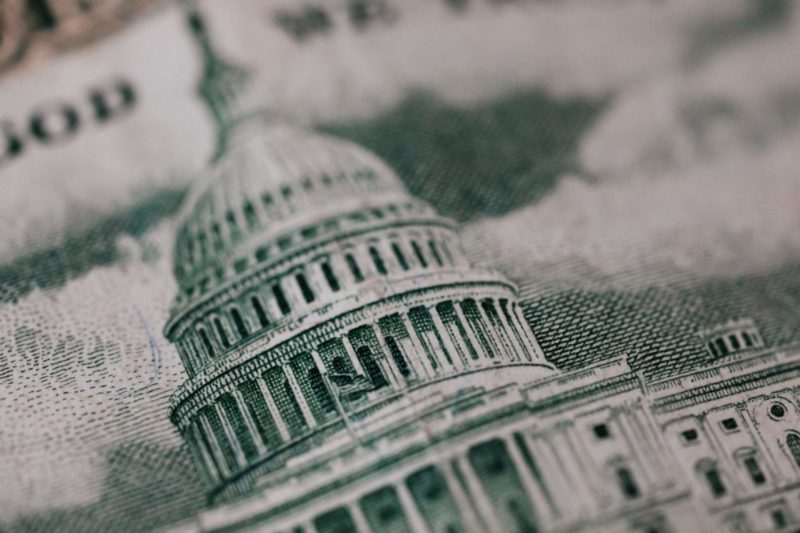Audio:
The following presentation by Waldron private Wealth is intended for general information purposes only. No portion of the presentation serves as the receipt of or as a substitute for personalized investment advice from Waldron or any other investment professional of your choosing. Please see additional important disclosures at the end of this presentation.
Ben:
Hi everyone, this is Ben Greenfeld, Partner and Chief Investment Officer at Waldron Private Wealth and today I am joined by Nate Ecoff, who is Managing Director of our investment team, and Pat Ellsworth, who’s a Senior Investment Analyst on our investment team. Thanks for being here.
Nate:
Yeah. Thanks for having us.
Pat:
Thanks for having us.
Ben:
We thought we would get on today and just give a recap of what’s happening in “the markets” and I say the markets in quotes because everyone is squarely focused on what’s happening with the S&P 500 and we wanted to just dig a little deeper into that, coming out of 2022. Guys, it seems like as we rolled into 2023 and equity markets started to rally and everything that really wasn’t working last year and the major sell off started to turn around and started to work, it’s been a pretty smooth ride I think for the first six months of the year and as we turned the page into the back half, things started to gyrate a little bit and we saw some choppiness in both the equity markets broadly and the bond market, as interest rates had some movements. When we talk about markets this year, the big focus as I mentioned has been the S&P 500 and there’s been a lot of talk breaking it down into the S&P 7 and the S&P 493 – the S&P 7 being the biggest tech names out there – Meta or the former Facebook, Apple, Amazon, etc. Those names are up north of 50% when you look at them and the remaining 493 names are essentially flat for the year. Really not that exciting.
Nate:
Yeah, that’s a great point, Ben. So one of the things the way the S&P 500 is constructed is the largest stocks in the index make up the biggest weight and those 7 names are the largest 7 stocks in the index, so they make up over 30% of the index. So when they’re up 50%, the index looks great. I think it’s interesting – a lot of investors don’t think that’s the best way to construct the index, so they use what’s called the S&P equal weight. They basically take the 500 stocks and make them all the same weight of the index. And if you look at that index this year, it’s only up 70 basis points. So you know, I think that speaks volumes to your point about just those 7 stocks really driving everything this year.
Ben:
Yeah, it’s been quite a difference when you take it even a step further and get out of just the big tech or the big growth names in the US. Even look at the large companies with a value bias, companies that are energy related or financially related as examples, those names are essentially flat for the year and you take it down the market cap to small cap equities and you have small cap growth equities essentially flat and small cap value oriented equities down over 3% for the year and it’s really been a wild, divergence between what’s happening in the various asset classes. And looking at equities overseas, you have equities overseas as a whole up about 5%, and emerging market equities up a couple percent for the year. Really not much is happening. It’s been wire to wire from January through first week of November here, not much has happened widely and I think Pat, maybe you want to comment a little bit about what we’ve seen happen in the bond market this year. I think that’s been a really interesting scenario.
Pat:
Yeah, as we’re all aware, last year was kind of marked by really rapid increases in short-term interest rates and we came into 2023 with the yield curve pretty substantially inverted, which means that short-term interest rates were higher than long-term interest rates and that generally is an indication that the economy has some signs of weakness that’s indicating that investors are anticipating interest rates to come down in the future and that really gathered a lot of headlines and caused some pessimism within the market. And what we’ve seen, especially in the last two to three months is the long end of the yield curve and longer-term interest rates begin to move substantially higher. From around the end of July to a few weeks ago they were up over a full percent, which is a pretty substantial move for the bond market and that’s due to a few factors, but one of the main ones is the economy has been a lot stronger than a lot of individuals anticipated. Employment has been strong, wage growth has started to moderate, inflation has come down and the housing market stays strong. There’s still work to do on the inflation front and the labor market is something to monitor but the the long end of the yield curve coming up has driven bond prices down, which leads to a lot of volatility, especially after 2022 when bonds had a relatively poor year. The important thing to note is that the starting yield when you invest in the bond market is a pretty good indicator of what your return is going to be over a long period of time and so, while the increase in yields right now causes prices to go down on paper, if you’re invested in high quality bonds that you are not going to default, your forward-looking return is a lot better when yields increase to the extent they have.
Nate:
I think overall it’s a good time to invest in bonds, just considering the fact that if you look at the change in interest rates from a positive change of 1% in bonds and the return that you would get or the negative return that you would receive from that versus a 1% decrease in bonds, especially considering everybody does expect interest rates to fall at some point in the future. It’s actually kind of an asymmetric profile right now so you actually get more from interest rates falling on your bond portfolio than you would be negatively impacted from interest rates rising.
Ben:
Yeah, it seems like even over the last couple of weeks, volatility in bond prices has really picked up. We now have bonds essentially flat for the year. Municipal bonds are essentially flat. Taxable bonds are slightly down for the year. That is a meaningful change from if we were looking at this data 10 days ago, right? You saw both taxable bonds and municipal bonds down for the year and that movement, to Nate’s point, isn’t something we normally see that quick movement in bond prices in a short period of time. Nate, if we look at the likelihood of interest rates going down from an economic perspective, where do you see things today?
Nate:
Considering how quickly we’ve seen monetary policy change over the past 18 months to go from a Fed funds rate at 0% to where we sit today at 5.5%, the employment market still remains pretty strong. Inflation is coming down. All those things point to signs of strength within the economy, especially that it can hold up to that degree considering the vast change that we saw over the past 18 months, so my expectation is that we’ll probably see either some form of a soft landing, maybe a medium-hard landing, which would be some form of mild recession. In either of those scenarios, I would expect equity markets to rally in either of those scenarios. I would expect the Fed to eventually pull back on the Fed funds rate and lower that. And if we can see GDP growth hold up in the face of 5.5% Fed funds rate increase, I think we could be in store for a good couple of years ahead.
Ben:
I think your comment about GDP is really interesting because I don’t think the full impact of the Fed raising rates over 5% really isn’t going to be felt from a GDP perspective until the middle part of 2024. We haven’t seen that really having major impact on the economy yet. If you look at where the Fed rates are today, looking at the Fed watch tool, there’s a very strong likelihood, I think we can all agree, that there’s probably not a good chance of the Fed raises rates at its next meeting in December. I think it’s probably a foregone conclusion. They’re going to hold rates steady despite the fact that their last statement has continued to leave the door open for that. What I find interesting is that when you look at probabilities of where rates are going, by the time you get to June of next year, you start to see the majority of the Fed watch tool kind of lean towards a rate cut. I think that whether it happens in June or July or September, when we start to see cuts, I’m not confident when it’s going to be. But I do think at some point in the middle part/middle of the back half of 2024, we’ll start to see rates come down for all the reasons you just talked about Nate.
Nate:
It truly depends on what’s happening in the underlying economy. We always say the Fed takes the stairs up and the elevator down, right? So typically it’s a slow rise in Fed funds rate and then we see some sort of pain or stress in the economy and the Fed cuts more quickly on the on the way down than they do on the way up.
Pat:
I think the other good thing to point out and Nate, you kind of touched on this, but the degree to which the economy has been resilient through these rate cuts is a sign of a healthier economy than most people anticipated. I think post financial crisis, we had zero to very low interest rates for a long period of time and that’s not an indication of a well-functioning, healthy economy. We don’t want to need artificially low interest rates to prop up investment markets and try to push employment and economic growth. So the fact that we have higher interest rates than we’ve had in quite some time and even had one of the highest quarterly GDP readings outside of COVID in some time last quarter is a good sign. There are still things too that need to be worked out, but it’s a good indication.
Nate:
It’s a good sign and then the markets interpret it in a bad way, right? It’s the good news is bad news sort of scenario where because the economy is doing so good, that’s going to lead to the Fed not needing to cut rates as quickly or as soon. And so equity markets don’t like that. Equity markets want to be propped up by lower interest rates and I think it’s unfortunate but it’s a good news, bad news, but eventually good news will become good news.
Ben:
Absolutely. I think that your comment about how the markets react is something that we’ve also seen play out this year, as of late of how markets react to corporate earnings. It seems like earning come out, the headline earnings look good and then there’s a comment made in the earnings release or the earnings press call that causes the markets to sell off whatever that particular name is. I happen to be talking to a guy recently about this, and he’s like, “I don’t understand – earnings were great and then we had great revenue growth and then the stock sells off.”
Nate:
They didn’t say AI enough.
Ben:
Exactly, you’re exactly right. Yeah, all the all the hot items this year are the hot button topics of AI, big tech – all that is really what’s continuing to get the focus. I think this has been a good, good recap. Anything else you want to add?
Pat:
Not on my end. Thanks for having us.
Ben:
Again, thank you guys. We hope that this has been helpful and we’re here to discuss any questions you might have. Feel free to reach out to any of us or feel free to reach out to anyone that you work with here at Waldron. We’d be glad to talk in more depth about what’s happening as it relates to your specific situation or about the markets or economy in general.
The previous presentation by Waldron private wealth was intended for general information purposes only. No portion of the presentation serves as the receipt of or as a substitute for personalized investment advice from Waldron or any other investment professional of your choice. Different types of investments involve varying degrees of risk, and it should not be assumed that future performance of any specific investment or investment strategy or any non investment related or planning services discussion or content will be profitable be suitable for your portfolio or individual situation or prove successful. Waldron is neither a law firm nor accounting firm, and no portion of its services should be construed as legal or accounting advice. No portion of the video content should be construed by a client or prospective client as a guarantee that he or she will experience a certain level of results. If Waldron is engaged or continues to be engaged to provide investment advisory services, a copy of Waldron’s written current disclosure brochure discussing our advisory services.






